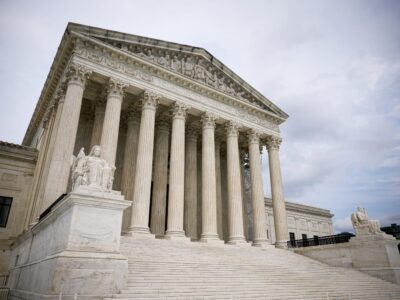The Worst Supreme Court Environmental Decision?

Recently appearing in my in-box is Pepperdine Law School’s latest law porn, a glossy brochure about its upcoming symposium, “Supreme Mistakes: Exploring the Most Maligned Decisions in Supreme Court History.” Dan will speak, but unless he decides to talk about it, environmental law doesn’t figure to get on the agenda: none of the other speakers has particular environmental expertise. That seems to make sense: even the worst environmental decision can’t compare to Dred Scott, Buck v. Bell, Hammer v. Dagenhart, Lochner, the Civil Rights Cases, or Bush v. Gore.
But what if we had to find one? My nominee would be Lucas v. South Carolina Coastal Council, a 1992 decision in which Justice Scalia decided to open the floodgates to takings lawsuits. Lucas held that when a governmental regulation works a 100% elimination of all “economically viable use,” then it works a Taking per see — no balancing is necessary (as it is under the standard Penn Central test).
Lucas isn’t a silly decision simply because it relies on a wholly implausible fact scenario (the trial court had held that there was a 100% wipeout even though it was obvious that David Lucas’ beachfront plot still retained value). It isn’t silly because it maintains an expressly and needlessly anti-environmental ethic (Scalia quotes Lord Coke’s dictum, “what is the land but the profits thereon?”, ignoring any non-market value). It’s silly because it is a transparently ideological attempt to let lower courts find takings where none exist.
This is because of the so-called “denominator problem.” You claim that that a regulation has wiped out 100% of your property’s value. But how do you measure the property? Say you have 10 acres, and the regulation forbids you from doing anything with five of them. Can you claim that the regulation has wiped out 100% of your 5 acres? What are the guidelines here? Tellingly, Scalia refuses to say. My view is that this was a pretty clear attempt to let lower court judges — the majority of whom by 1992 were Reagan or Bush appointees — to find in favor of property owners and make environmental regulations prohibitively expensive. Many took Scalia up on it, most notably S. Jay Plager of the Federal Circuit, which hears a lot of takings claims.
Fortunately enough, Lucas lost a lot of its vitality in subsequent years, as Sandra Day O’Connor realized just how silly it was, and Ruth Bader Ginsburg replaced Byron White. As Richard Lazarus has demonstrated, Scalia lost Anthony Kennedy with his insistence on writing such an extreme opinion, and Kennedy now runs the place. But with Alito replacing O’Connor, there are now four solid votes for it, and it sits, like a loaded weapon, ready in the hands of the Pacific Legal Foundation and the Institute for Justice as soon as Kennedy leaves the court or changes his mind.






Reader Comments